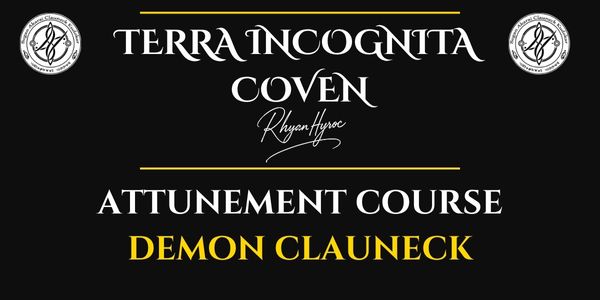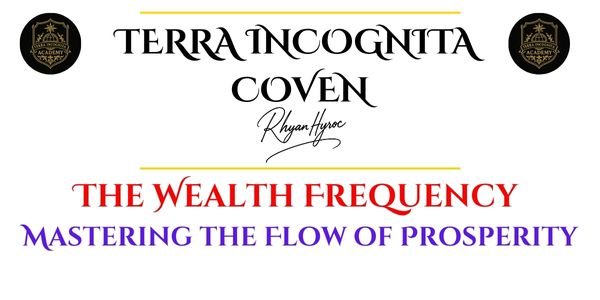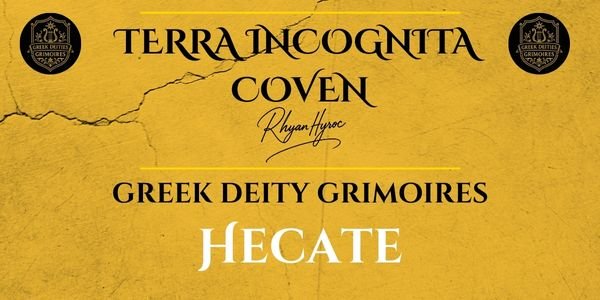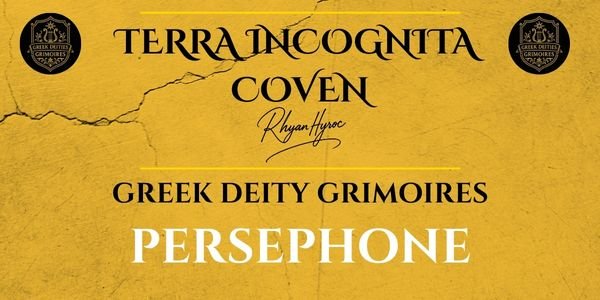Welcome to our Support Portal. Search for answers using the search box below,
or create a support ticket if you cannot find your answer.
Who is Demon Andras

Andras: Marquis of Discord and the Scourge of Peace in the Ars Goetia
By Rhyan Hyroc, Leading Scholar of the Lemegeton and Ceremonial Demonology
- Andras: Marquis of Discord and the Scourge of Peace in the Ars Goetia
- Identity and Rank in the Ars Goetia
- Original Description from the Ars Goetia
- Modern Translation and Interpretation
- Appearance and Manifestation
- Historical Context and Comparative Analysis
- Symbolism and Functions
- Role in Ceremonial Magic
- Observations and Closing Analysis
- Frequently Asked Questions About Andras
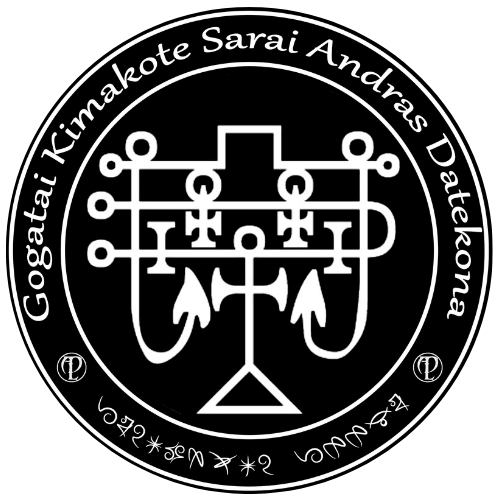
Identity and Rank in the Ars Goetia
Andras is the sixty-third spirit listed in the Ars Goetia, the first book of the seventeenth-century grimoire Lemegeton Clavicula Salomonis, commonly known as The Lesser Key of Solomon. He bears the rank of Marquis and commands thirty legions of infernal spirits. Among the seventy-two demons of the Goetia, Andras is perhaps the most overtly destructive—his powers do not lie in subtle influence, but in catalyzing open conflict, sowing hatred, and extinguishing harmony.
He is considered a spirit of pure discord, whose intervention often results in the breakdown of social structures, alliances, or emotional bonds. His mere presence, as conveyed in the primary grimoires, is said to be perilous even for the summoner. Where many Goetic spirits offer a balance of constructive and disruptive capacities, Andras represents the unchecked impulse toward annihilation of peace.
His name and attributes remain consistent across all known Goetic manuscripts, including Sloane 3825, Sloane 2731, and Harley MS 6483. His archetype is further reinforced by references in later grimoires, such as the Pseudomonarchia Daemonum, where he is likewise feared for his violent tendencies and suicidal influence on magicians who do not properly bind him.
Original Description from the Ars Goetia
The following is Andras’s original entry from the standard English edition of the Ars Goetia:
“The Sixty-third Spirit is Andras. He is a Great Marquis, appearing in the form of an Angel with a Head like a Black Night Raven, riding upon a strong black Wolf, with a Sharp and Bright Sword flourishing in his hand. His office is to sow Discords. If the Exorcist have not care, he will slay both him and his fellows. He ruleth over 30 Legions of Spirits.”
This entry presents a figure whose nature is both regal and deadly—an angelic warrior wielding chaos, warning practitioners that even summoning him entails serious risk.
Modern Translation and Interpretation
Andras is a Marquis of strife, a daemon of unrest whose primary function is to dissolve stability. He appears with terrifying grandeur: a humanoid angelic form, crowned with the head of a black raven, mounted on a massive black wolf, and brandishing a sword that glints with threat. Every detail of his iconography signals violence, division, and the breakdown of peaceful accord.
His role is singular: to sow discord. He does not manipulate gently, nor does he persuade. He incites. The Goetia clearly warns that if the conjurer does not take proper care, Andras will kill not only the operator but also anyone else present in the ritual space. This is not metaphor but direct instruction from the grimoire. The spirit’s presence is volatile, and his energy, once unleashed, moves swiftly and without remorse.
Andras does not lie or deceive—he divides through action, not illusion. He is invoked in operations where the destruction of alliances is intentional: severing bonds, ending pacts, or causing schisms where diplomacy has failed. He is not a spirit of nuance, but of severance.
Appearance and Manifestation
Angelic Warrior with Raven Head
Andras appears in angelic form, but with a head like a raven of the night. This fusion of celestial shape and corvid face is key to his identity. The angelic body reflects his former status among the higher orders of spiritual beings—a being of strength, rank, and divine configuration. The raven’s head, however, signals his fall: a descent into darkness, death, and omen.
Ravens are traditionally messengers of fate, harbingers of doom, and scavengers of the battlefield. To have such a head atop an angelic form suggests a being whose entire existence is the inversion of order: a sacred form animated by destructive intent.
Mounted on a Black Wolf
The wolf has long symbolized both untamed ferocity and pack disruption. Andras rides a strong black wolf—an image of war, fearlessness, and deathly loyalty. In some ritual experiences, the wolf appears before the spirit himself, signaling that the energy of Andras has entered the space.
The color black in both the wolf and the raven emphasizes void, fear, and the unknown. Andras does not just cause fighting—he is the field on which unity breaks apart.
The Sword
Andras’s sword is described as “sharp and bright,” a paradox for a spirit of shadow. The brightness may symbolize clarity in conflict: the truth revealed when facades fall. The sword cuts through illusions, attachments, and diplomacy, forcing matters to a violent conclusion.
Historical Context and Comparative Analysis
Spirits of Division in Goetic Literature
While other spirits in the Goetia can cause conflict, none are defined by it as purely as Andras. Spirits like Botis may reveal secrets, causing tension; spirits like Amon can create or resolve feuds. Andras alone sows discord as his central function, and is said to turn that force against the summoner if not properly constrained.
His status as a marquis (not a king or president) is appropriate: he is powerful, but directed. He does not rule broadly but strikes surgically—dividing, unraveling, dissolving.
Comparisons with Destroyers in Other Traditions
In Hindu cosmology, spirits such as Kali or Rudra take on roles of destruction—but for the purpose of rebirth. Andras has no such redemptive function in the Goetia. He destroys for the sake of division. In Christian demonology, he might be compared to the “accuser” function of Satan: not to deceive, but to challenge unity.
In this way, Andras represents the daemon of breakage that exposes hidden weaknesses. He is the voice that asks: what holds this together, and why? Then he severs it.
Symbolism and Functions
Chaos, War, and Rupture
Andras represents the breakdown of false peace. He is often invoked not in haste, but when all other solutions have failed. His presence signals an end to tolerance—he is the spirit that makes war inevitable.
He can be summoned to destroy political structures, dissolve romantic relationships, end business partnerships, or annihilate oaths. When invoked, he does not target indiscriminately: he moves toward the weakest bond first, exploiting existing fractures.
Raven and Wolf as Living Symbols
The raven signals the coming of fate, often tied to death or judgment. The wolf reflects the predator who does not ask questions. Together, they symbolize Andras’s capacity to hunt down weakness, tear apart unity, and leave silence where there was structure.
These animals also serve as signs of his presence in ritual. Practitioners working with Andras report dreams of wolves, sudden sightings of corvids, or ominous messages delivered during trance.
Role in Ceremonial Magic
Safety and Containment
Andras is never to be summoned lightly. His sigil must be drawn with unwavering care and empowered with the strongest protective wards. His triangle should be fortified with Saturnian symbols, iron, and flame. Participants should be spiritually grounded and fully aware of the risks involved.
Evocations must be precise, and the operator must maintain emotional control. Any fear, confusion, or disorder in the ritual space may be exploited by the spirit. It is strongly advised that only experienced ceremonialists summon Andras directly.
Intentions and Use Cases
- Ending relationships or contracts that cannot be dissolved by ordinary means
- Triggering rapid collapse of enemy alliances or hostile organizations
- Causing interpersonal discord between adversaries or harmful figures
- Severing personal attachments that are psychologically damaging
- Revealing the hidden fragility of a supposedly stable structure
Andras is not used to “make people fight.” He is used to destroy unity that is false, toxic, or unsustainable.
Manifestation Signs
Practitioners often report a rapid shift in air pressure, the sound of claws or wings, and a sense of presence circling the ritual perimeter. Some have experienced sudden headaches, nosebleeds, or dizziness. Andras does not manifest gently—his arrival is felt as an intrusion of force.
He may communicate in silence, through images or burning sensations in the limbs. His messages are often short, forceful, and final.
Observations and Closing Analysis
Andras is a spirit of terminal energy. He is not chaos for the sake of madness, but division for the sake of truth. His force is absolute, unforgiving, and clear. To summon Andras is to admit that peace can no longer serve the goal—that something must end for transformation to begin.
He is not a teacher. He does not guide, console, or clarify. He cuts. And yet, in some magical systems, the role of the cutter is sacred. Andras removes that which cannot be sustained. His energy, though feared, serves an initiatory purpose for those who are prepared: he ends what must be ended.
For those who must sever the unsalvageable, destroy binding illusions, or harness the archetype of decisive rupture, the 21-day remote attunement to Andras offered by Terra Incognita Coven provides full access to his current. Seven distance rituals, daily mantra recitation, and precise energetic tuning are included.
Begin the initiation here: https://terraincognitacoven.com/courses/andras-21-day-remote-spirit-initiation-unlock-protection-courage/
Frequently Asked Questions About Andras
1. Who is Andras in the Ars Goetia?
Andras is the 63rd spirit listed in the Ars Goetia and holds the title of Great Marquis of Hell. He is a highly dangerous entity associated with discord, conflict, and chaos. Andras commands 30 legions of spirits and is known to incite destruction among individuals and groups.
2. What is Andras’s main function?
Andras specializes in sowing division, especially within communities, partnerships, and political structures. His presence can catalyze endings, disruptions, and the exposure of hidden enmity. He is not a spirit of peace but of revelation through conflict.
3. What does Andras look like?
According to the Lemegeton, Andras appears with the body of an angel and the head of a raven, riding a black wolf and wielding a sharp, flaming sword. His imagery suggests swift, merciless force and the severing of bonds or illusions.
4. Is Andras dangerous to work with?
Yes. Traditional grimoires warn that Andras is perilous and may kill the magician and those close to them if the ritual is not done with strict precautions. He is not recommended for beginners and should only be approached within rigorous ritual structures.
5. When is the best time to summon Andras?
Andras is most aligned with Mars energy and works well during planetary hours of Mars, especially on Tuesdays. His influence is strongest when conflict is already stirring and a transformative rupture is needed.
6. Can Andras be used for baneful magic?
Yes. Andras is a spirit of devastation and can be petitioned for advanced baneful workings such as just retribution, severing toxic ties, or causing confusion among enemies. Extreme caution is always advised, as his energies can spiral unpredictably.
7. What kinds of offerings please Andras?
Andras does not typically require offerings, but some practitioners report that martial incenses like dragon’s blood, iron-based talismans, and blood-red candles sharpen his presence. However, he responds primarily to intention and authority, not gifts.
8. Does Andras work with initiatory change?
Yes. For the skilled practitioner, Andras can function as a spirit of radical transformation through destruction. He clears away false alliances, sabotages illusions, and forces confrontations that reveal hidden truths. His path is one of the sword, not the balm.
9. Can I ask Andras for personal empowerment?
Only in very specific contexts. Andras empowers through harsh lessons—his energy is not nurturing but forging. He teaches power through battle, strength through solitude, and self-reliance through chaos. Those who thrive in conflict may resonate with his current.
10. How can I begin working with Andras safely?
A dedicated initiation is the best route for safe contact. The Blade That Cuts Falsehood – 21-Day Attunement to Andras is a structured ceremonial path that provides protection, discipline, and guidance for those called to his current. Begin here: https://terraincognitacoven.com/courses/andras-21-day-remote-initiation/
References
- Esoteric Archives – The Lesser Key of Solomon (Lemegeton Clavicula Salomonis)
A comprehensive and scholarly transcription of the original Goetia, including the descriptions of all 72 spirits. Frequently referenced by demonologists and historians alike.
https://www.esotericarchives.com/solomon/lemegeton.htm - Sacred Texts – Ars Goetia (1904 Mathers & Crowley Edition)
Public domain edition edited by S.L. MacGregor Mathers and Aleister Crowley, providing a foundational English version of the Goetia used in ceremonial magic.
https://www.sacred-texts.com/grim/lks/index.htm - The Goetia of Dr. Rudd – Edited by Stephen Skinner & David Rankine
A modern critical edition of the Goetia with extensive commentary, sigils, and historical context drawn from Dr. Thomas Rudd’s magical library.
https://www.innertraditions.com/books/the-goetia-of-dr-rudd - Encyclopedia of Demons in World Religions and Cultures – Theresa Bane
An academically structured encyclopedia compiling cross-cultural entries on demons, including a comparative analysis of Goetic figures.
https://www.mcfarlandbooks.com/product/encyclopedia-of-demons-in-world-religions-and-cultures/ - Daemonolatry Goetia – S. Connolly
A practical manual of Goetic invocation from a Theistic Satanist perspective, offering interpretations of each spirit’s role in modern demonolatry.
https://www.lulu.com/shop/s-connolly/daemonolatry-goetia/paperback/product-1zgn88vg.html
Demon Camio Grimoire: hidden speech, Interpreter of Silence & Emissary of Truths
The Grimoire of Camio – The Armored Path of KnowingThe Struggles You Face—and How Camio…
Pact of Prosperous Alignment Attunement to Clauneck for Wealth, Loyalty & Acquisition
Walk the Gilded Path of Wealth and Sovereignty: ClauneckClauneck is the divine banker of the…
The Wealth Frequency: Mastering the Flow of Prosperity
Applied Spiritual Mastery to Prosperity & AbundanceGrounded in the principles of The Kybalion (1908), Arbatel…
Hecate Grimoire: Queen of Shadows and Thresholds
An Initiation into the Current of Hecate — Goddess of Night, Magic, and FateSomething Has…
Persephone Grimoire: Keeper of the Sacred Threshold
The Descent Is Not the End. It Is the Beginning.There comes a moment when light…
Pan Grimoire: The Untamed God of Ecstasy and Wild Freedom
The Call You’ve Been Ignoring Is No Longer Waiting.There is a hunger that no temple…


